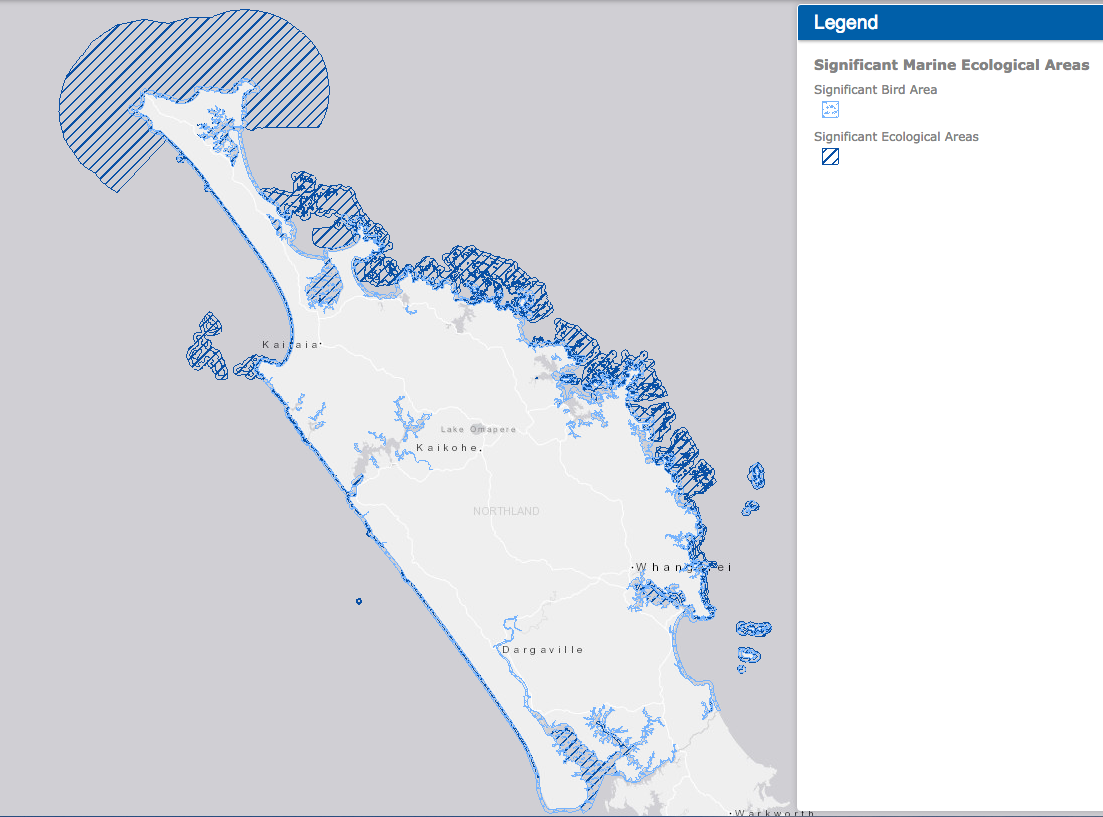The New Zealand Coastal Policy statement and the Resource Management Act have significant sections creating a mandate for Regional Councils to understand or map biodiversity resources in their areas, including the coastal marine area out to the 12 nautical mile limit.
On this page, we feature two Councils that have positively engaged in creating an inventory and map of their marine biodiversity areas. As these Council led biodiversity information systems to develop they will become an import layer of information to support marine protected area planning. The trend is for Councils and local communities to become more involved in identifying threats to important biodiversity areas and species. See our case study of the Motiti Rohe Moana Trust.
Map of the Northland Marine Significant Ecological Areas information layers, part of the Northland Regional Council Draft Coastal Plan

More Resources on Marine Significant Ecological Mapping and Information Systems
The New Zealand Coastal Policy Statement (NZCPS) was reviewed and updated in December 2010 and replaced the previous NZCPS (1994). See Policies 1 and 11 of the NZCPS 2010 which have potential implications for the identification and classification of significant sites in the coastal environment. (See the NZCP in the download list below)
Go to the Northland Regional Council Draft Coastal Plan consultation web page.
NRC Online Mapping system featuring the Northland Marine Significant Areas
Marlborough Regional Council
Marlborough Council and DoC have produced a report, Ecologically Significant Marine Sites in Marlborough, that identifies 129 individual sites that support rare or special features. It includes information about seabed geology, habitats and marine life and is useful for divers, fishermen, nature-lovers and resource consent applications.
Some of the most important sites for sustaining fish and marine diversity are habitats created by living organisms. These biogenic or living structures provide food and hiding places for marine invertebrates and small fish which, in turn, support abundant fish stocks.
Threats to these special areas include dredging, trawling, anchoring and sedimentation and Council is monitoring some of the sites to understand how they are faring, and also surveying areas that we know are important but need more information on.
Council has developed a protocol for members of the public to nominate new ecologically significant marine sites.
Visit the Marlborough Sounds Significant Marine Ecological Areas web page.
A presentation of the Marlborough Sound Significant Areas Monitoring Program by consultant Rob Davidson
RMA and Marine Significant Ecological Areas Document Archive
